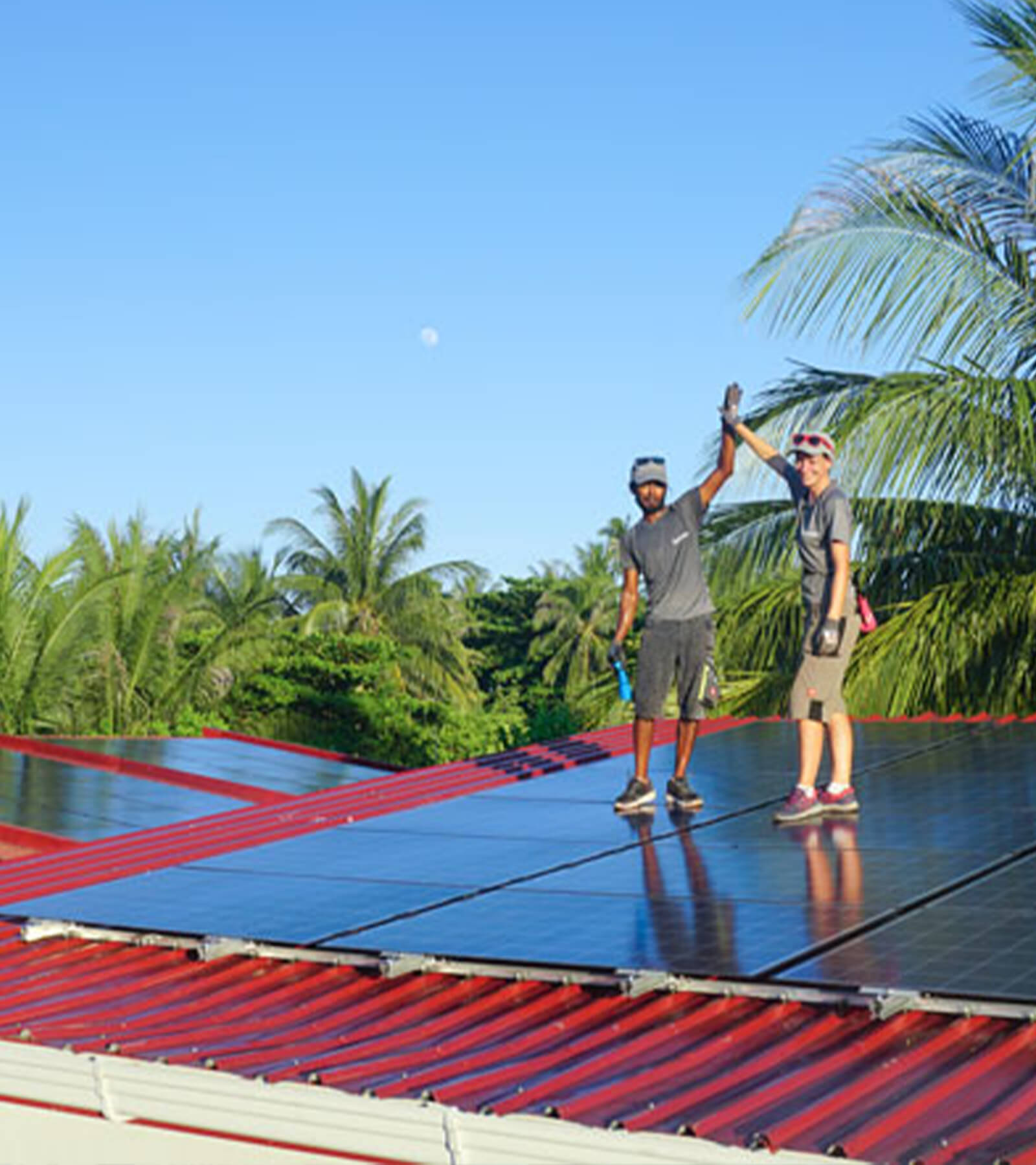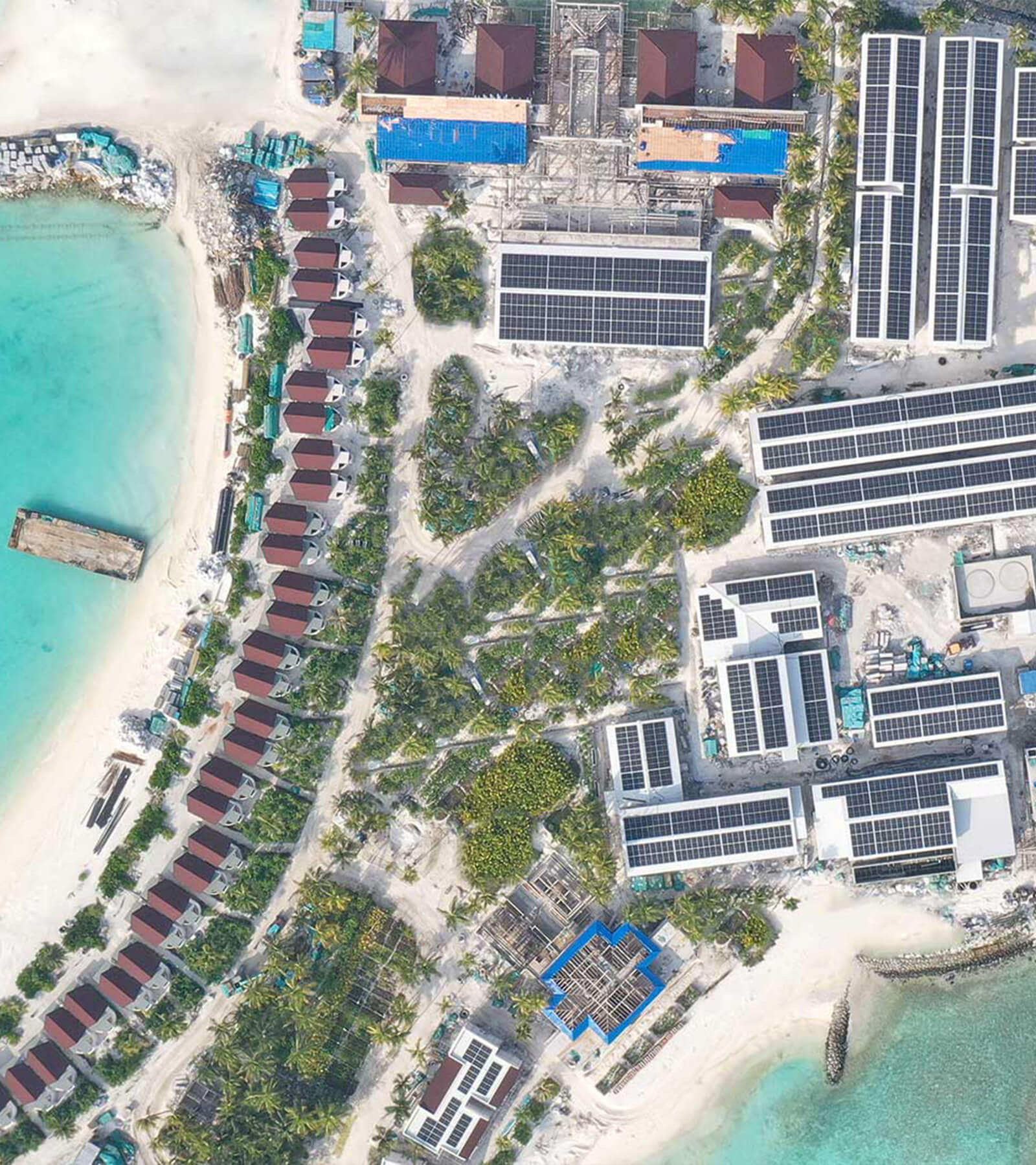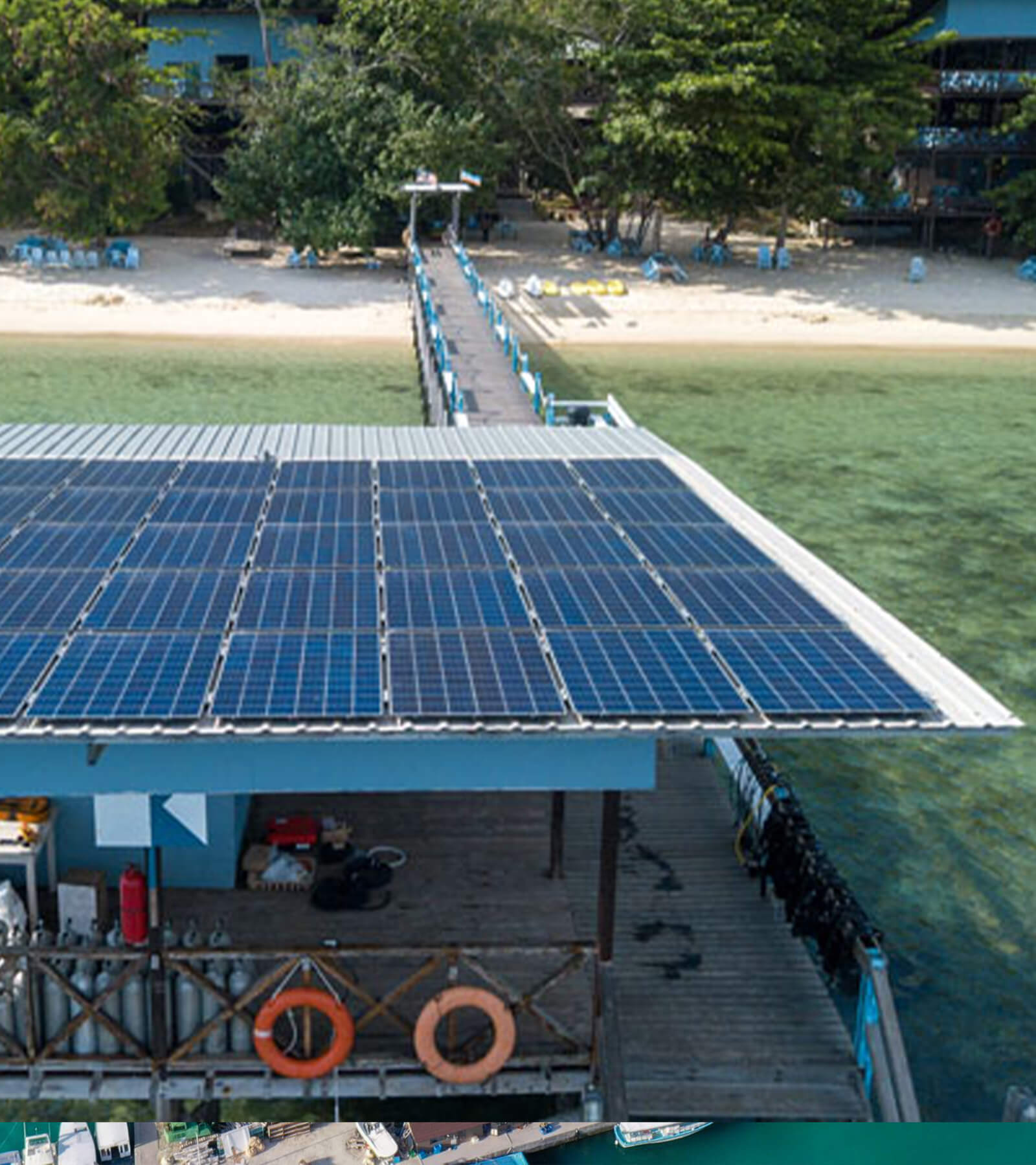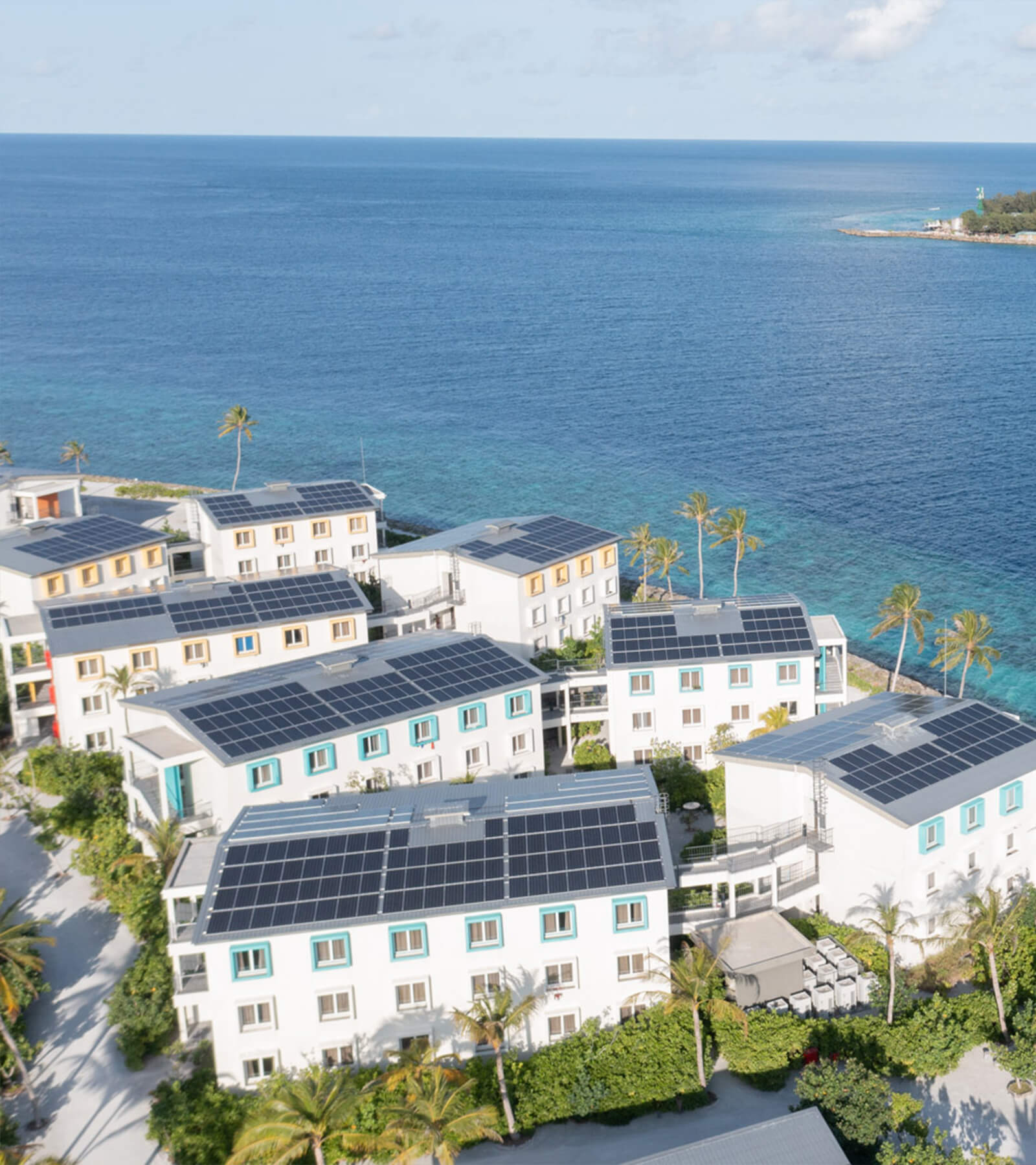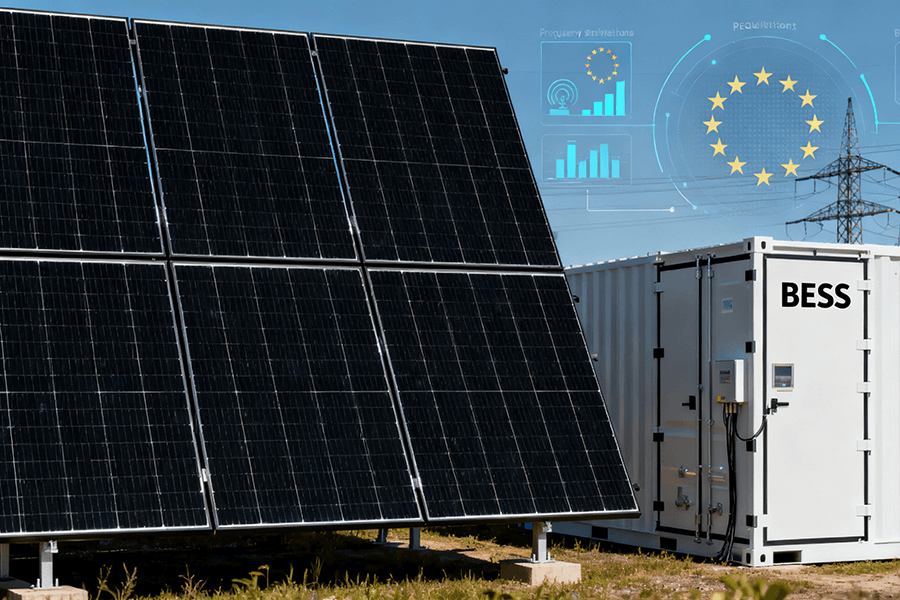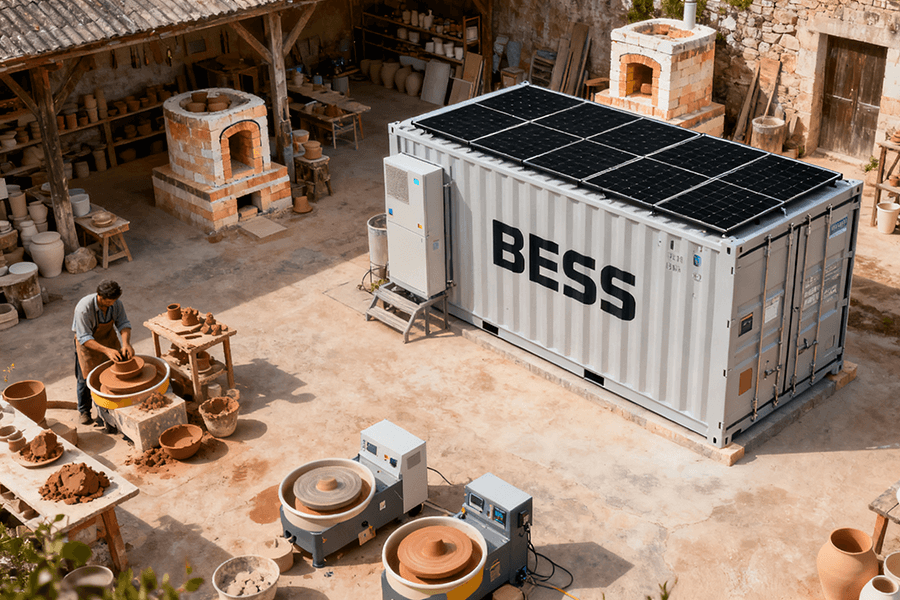BESS Container Fire Safety: Stop thermal runaway raves! Deep dive into 2025’s advanced detection (gas sniffers!), suppression smackdowns (clean agents vs. water mist!), compartmentalization & venting. Moving beyond NFPA 855/IEC 62933-5-2 compliance for true safety. Maxbo Solar insights included.
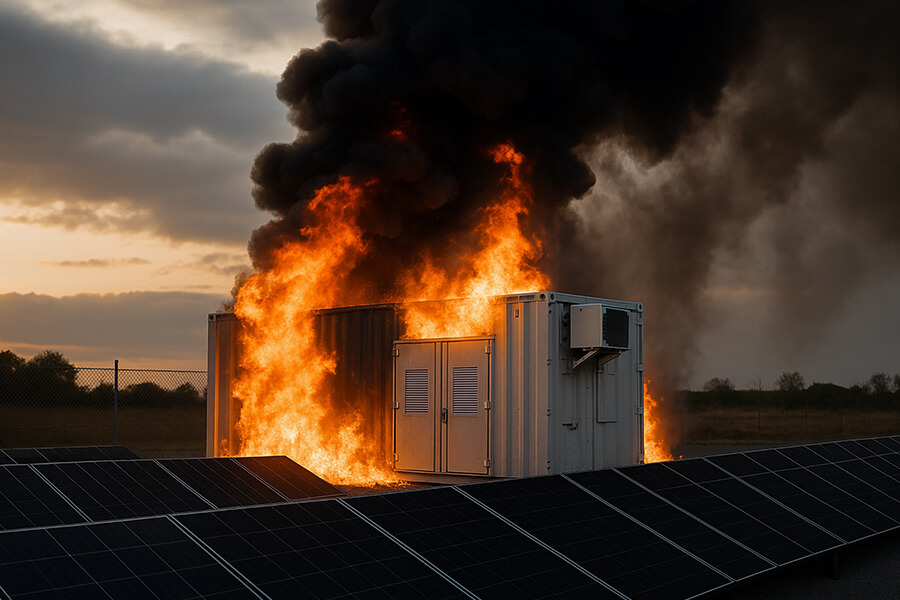
The Lithium Party No One Wants an Invite To
Imagine cramming enough energy to power 10,000 homes for an hour into something resembling a high-tech shipping container. That’s the magic – and inherent pyrotechnic potential – of modern grid-scale Battery Energy Storage Systems (BESS). Neatly stacked rows of lithium-ion “energy nuggets” promise a cleaner grid. Brilliant! Until one overzealous cell, stressed by a defect, overcharge, or just plain bad luck, decides to throw a spontaneous, multi-thousand-degree rave. Suddenly, your container isn’t storing power; it’s hosting a runaway chemical exothermic reaction with more enthusiasm than a Golden Retriever spotting a squirrel park.
Why Grandad’s Fire Extinguisher Won’t Cut It
BESS container fires aren’t your typical campfire or even a warehouse blaze. They’re complex, self-sustaining chemical chain reactions called thermal runaway (TR). When one cell fails catastrophically, it heats its neighbors, triggering their failure in a domino effect that can reach temperatures exceeding 1,000°C (1,832°F) and release highly flammable gases like hydrogen faster than you can say “evacuate the county.” Standard smoke detectors and sprinklers are utterly outmatched. Water? Lithium-ion batteries laugh at it (or worse, react violently). Basic suppression is like showing up to a thermite fight with a water pistol.
The Stakes: More Than Just a Bad Hair Day
The consequences of inadequate fire safety are far from trivial:
- Explosive Growth = Explosive Risk: Global BESS deployments are skyrocketing. Wood Mackenzie projects over 1,000 GWh of new grid-scale storage capacity will be added globally between 2023 and 2027, much of it housed in containers. More containers = more potential ignition points. [Source: Wood Mackenzie, Grid-Scale Energy Storage Market Outlook 2024]
- Incident Frequency is Real: While statistically rare per installation, incidents occur. The Electric Power Research Institute (EPRI) tracks significant BESS fire events. Their data indicates that while safety improves, the unique challenges of TR mean fire risk remains a critical design and operational focus area. [Source: EPRI Energy Storage Incident Database – Public Summary Reports]
- Costs are Astronomical: A single major BESS fire isn’t just about replacing the unit. Costs cascade:
- Asset Loss: $ Millions per container.
- Grid Disruption: Lost revenue & penalties (e.g., CAISO imbalance charges).
- Site Remediation: Toxic cleanup can cost 500,000−2 Million+.
- Reputational Damage & Insurance: Marsh reports premiums for large-scale BESS projects can increase 200-400% after a major incident, if coverage remains available at all. Total liabilities can easily surpass $10-20 Million per event. [Source: Marsh, Energy Storage Risk Management Report 2024]
Table: Why BESS Fires Are a Different Beast
| Feature | Traditional Fire (e.g., Warehouse) | BESS Container Fire (Thermal Runaway) | Why It Matters |
|---|---|---|---|
| Ignition Source | External (electrical fault, external heat) | Internal (cell defect, internal short) | Harder to prevent at source; failure originates within the energy source. |
| Propagation | Relies on external fuel, slower spread | Self-sustaining chemical reaction (TR), rapid domino effect | Fire spreads internally even without external fuel; incredibly fast (< seconds/minutes). |
| Temperatures | Typically < 800°C (1,472°F) | Exceeds 1,000°C (1,832°F) | Overwhelms standard materials and suppression; creates extreme radiant heat. |
| Key Hazard | Flames, Smoke | Flammable Gas (H2) Explosion Risk, Toxic Fumes (HF, CO), Re-ignition | Creates explosion hazards before flames are visible; produces highly toxic byproducts. |
| Suppression Challenge | Water often effective | Water can intensify reaction; Requires specialized agents | Standard suppression can be ineffective or dangerous; unique solutions needed. |
| Duration | Extinguished when fuel/oxygen depleted | Long duration (hours/days), potential for re-ignition | Requires extended monitoring/cooling; significant ongoing risk post-event. |
Beyond Compliance: Not Buzzword Bingo, But Survival
Simply meeting the bare minimum requirements of standards like NFPA 855 or IEC 62933-5-2 is like bringing a butter knife to a lithium dragon fight. Compliance is the starting line, not the finish line. Thermal runaway possesses an unnerving “enthusiasm” that demands proactive, layered defenses designed specifically to detect its earliest whispers, suppress its fury effectively, contain its spread ruthlessly, and ultimately prevent it from crashing the entire clean energy party.
Let’s ditch the complacency and talk about how to be the responsible adult in the room – the one with the advanced gas sniffer, the right suppression superhero, and a plan that goes way beyond the rulebook. First up: becoming a battery whisperer – detecting trouble before the first glow stick lights.
Thermal Runaway – When Your Battery Decides to Go Supernova
Picture this: one lithium-ion cell in your meticulously arranged BESS rack gets stressed—maybe from a manufacturing flaw, an overzealous charge cycle, or physical damage. Like a disgruntled employee on a Monday morning, it snaps. But instead of passive-aggressive emails, it launches an exothermic chemical rebellion. This cell heats up violently (we’re talking 500–1,000°C), vents toxic flammable gases (hydrogen, carbon monoxide), and literally cooks its neighbors. Those adjacent cells, now thoroughly baked, join the revolt in seconds. Congratulations: you’ve got thermal runaway (TR)—a chain reaction hotter than a habanero pepper eating contest and twice as uncontrollable.
The Domino Effect from Hell:
The real nightmare isn’t the first cell failing (though that’s bad enough). It’s propagation. One rogue cell can cascade through a module in <60 seconds, engulf a full rack in <5 minutes, and turn a 20-foot container into a pressure cooker of shrapnel and hydrogen explosions. According to 2024 testing by Sandia National Laboratories, propagation speeds vary by chemistry but consistently outpace human response times:
| Battery Chemistry | Avg. Propagation Speed (Cell-to-Module) | Peak Temperature | Flammable Gas Generated (H₂) |
|---|---|---|---|
| NMC (LiNiMnCoO₂) | 8–15 seconds | 1,100°C (2,012°F) | 20–30 L per kWh |
| LFP (LiFePO₄) | 45–90 seconds | 900°C (1,652°F) | 5–10 L per kWh |
| NCA (LiNiCoAlO₂) | 5–10 seconds | 1,200°C (2,192°F) | 25–35 L per kWh |
Source: Sandia National Laboratories, “Thermal Runaway Propagation in Grid-Scale BESS” (2024)
(https://energy.sandia.gov/programs/energy-storage/storage-safety/)
Why “Oops” Isn’t an Option:
- Gas Explosions: Hydrogen concentrations as low as 4% become explosive. A single 3 MWh container can release over 10,000 liters of H₂ during TR—enough to fill a hot air balloon and then some.
- Toxic Fallout: Hydrofluoric acid (HF) released from electrolyte decomposition penetrates skin/bone and requires specialized hazmat response. Just 5% body exposure can be fatal.
- Financial Napalm: DNV GL estimates the total cost of a 100 MWh BESS fire at $40–80 million (asset loss + cleanup + grid penalties + reputational damage). Insurance premiums can spike 300% post-incident.
(Source: DNV GL, “BESS Fire Risk and Insurance Implications” [2024])
The Office Gossip Analogy (But with Fireballs):
Think of TR like toxic workplace gossip. One person (Cell A) overhears misinformation (overcharge). They vent (literally) to two colleagues (Cells B and C), who overheat with outrage and spread it further. Soon, the entire department (module) is engulfed in a firestorm of drama—except here, the “hurt feelings” are 1,000°C fireballs and hydrogen bombs. Your fire extinguisher? It’s the HR department showing up after the building’s evacuated.
The Bottom Line:
TR isn’t a “maybe.” It’s chemistry in action. And as the U.S. Energy Storage Association notes, over 70% of BESS failures stem from electrochemical triggers (defects, shorts, voltage spikes)—not external fires.
(Source: U.S. Energy Storage Association, “2024 Incident Data Report”)
Up next: How to detect this lithium tantrum before the sparks fly. Spoiler: Your smoke alarm is useless.
Detection: Your BESS Needs a Superpowered Sniffer
(Because Smoke Detectors Are Useless Paparazzi)
Relying on standard smoke detectors in a BESS container is like trusting a weather vane to predict a volcano eruption. By the time smoke alarms blare, thermal runaway is already crowd-surfing through your battery racks. To stop the lithium rave before the glow sticks ignite, you need detection that sniffs out trouble at the chemical whisper stage.
Gas Detection: The Bloodhounds of BESS Security
Forget smoke—thermal runaway announces itself with a toxic cocktail of gases long before flames appear:
- Hydrogen (H₂): The primary explosion risk (>4% concentration = boom).
- Carbon Monoxide (CO): Early indicator of cell venting.
- Volatile Organic Compounds (VOCs): Electrolyte solvents “burping” pre-failure.
Next-gen sensors are the hyper-vigilant bouncers catching troublemakers in the parking lot:
| Sensor Technology | Detection Capability | Response Time | Cost per Sensor (USD) |
|---|---|---|---|
| Electrochemical (Dräger X-am 8000) | H₂ @ 1 ppm, CO @ 5 ppm | < 15 seconds | 1,200 |
| Laser Spectroscopy (MSA Titan) | H₂ @ 0.1 ppm, VOCs @ ppb levels | < 5 seconds | 5,000 |
| Metal-Oxide Semiconductor (Bosch BME688) | VOC “fingerprinting” | < 30 seconds | 100 (bulk deploy) |
Sources: Dräger Technical Handbook 2025, MSA Titan Datasheet, Bosch BME688 Whitepaper
Why This Matters:
- 2024 DNV GL field data shows gas-based systems detect TR events 8–12 minutes faster than smoke/heat sensors—critical when propagation occurs in seconds.
- Deploying H₂ sensors reduces explosion risk by >90% (Sandia Labs, 2024 BESS Fire Mitigation Report).
Heat Detection: Thermal CCTV for Your Battery Racks
Spotting a single cell “sulking” (overheating) before it rallies the mob requires thermal surveillance:
- Distributed Temperature Sensing (DTS): Fiber-optic cables act as thousands of thermometers along every wire. Detects hot spots with ±1°C accuracy at 1-meter resolution. Cost: 15,000–30,000 per container.
- Linear Heat Detection (LHD): Heat-sensitive cables trigger alarms at 68–100°C. Rugged but less precise than DTS. Cost: 5,000–10,000.
- High-Sensitivity Spot Detectors: Ultra-fast rate-of-rise sensors catching 10°C/sec spikes (e.g., Siemens Sinteso FDTA). Cost: 200–500 per unit.
The Spidey-Sense Gap:
“Basic detection is like trusting a guard dog that only barks after burglars loaded your TV into their van. Modern BESS needs better instincts than Peter Parker. Gas + thermal systems are the J.A.R.V.I.S. to your Iron Man suit—predicting threats before they materialize.”
Table: Why Layered Detection Isn’t Optional
| Detection Method | TR Alert Time | False Alarm Rate | Key Limitation |
|---|---|---|---|
| Smoke Detectors | 5–15 min too late | Low | Useless until fire visible |
| Standard Heat Sensors | 2–8 min late | Medium | Miss early gas/venting |
| Advanced Gas + DTS | 1–3 min pre-ignition | Ultra-Low (<0.1%) | Higher upfront cost |
Source: EPRI, “BESS Detection System Performance Benchmarks” (2025)
The Bottom Line:
A 2025 NFPA analysis confirms: Facilities using integrated gas + DTS systems reduced fire-related losses by 74% versus smoke/heat-only sites. Premium detection costs 20,000–50,000 per container—a rounding error compared to the $2M+ cost of a single TR event.
Up next: When detection fails (or the party crasher ignores the bouncer), it’s time for suppression superheroes to step in. Spoiler: Water is not the hero we need.
Suppression Smackdown: Your Fire Extinguisher Needs an Upgrade
(Water’s Not Invited to This Fight)
So your detection system screamed “Lithium tantrum incoming!” – fantastic. Now what? Dousing a thermal runaway (TR) fire with standard sprinklers is like trying to stop a grease fire with champagne: spectacularly wrong. Water reacts with lithium compounds, generates hydrogen gas (more explosive fuel), and splashes burning electrolytes around like toxic confetti. Time to pick your suppression superhero.
The 2025 Contender Lineup: Pros, Cons & Cold Hard Data
| Suppression Tech | Mechanism | Activation Time | TR Propagation Control | Container Damage | Cost (20ft Container) |
|---|---|---|---|---|---|
| Specialized Clean Agents (Novec 1230, FM-200) |
Chemically interrupts combustion | 10–30 seconds | Moderate (slows but poor cooling) | Minimal residue | 80,000 |
| Aerosols (Stat-X, FirePro) |
Solid particulates smother flames | 5–15 seconds | Good (if deployed early) | Corrosion risk (electronics) | 50,000 |
| Water Mist (HP) (Marioff HI-FOG, Securiplex) |
Micron droplets cool + oxygen depletion | 15–45 seconds | Best (superior cooling) | Moderate (wet but no pools) | 100,000 |
Sources: FM Global Data Sheet 8-9 (2025), NFPA 855 Suppression Annex (2025)
The Deep Dive:
-
Clean Agents (The Flash):
- Pros: Lightning-fast deployment (Novec 1230 floods in <30 sec), zero residue (protects adjacent electronics), environmentally friendly (ODP=0, GWP=1 for Novec).
- Cons: Poor thermal cooling – TR cells can reignite. Requires huge quantities (up to 400kg for a 3 MWh container). Facing 2025 EU F-gas phaseouts; refills cost 50–100/kg.
- 2025 Reality: Still dominates 55% of new projects, but fading due to cost/effectiveness gaps.
-
Aerosols (The Thing):
- Pros: Compact, pipe-free systems. Potassium-based aerosols (Stat-X) suppress flames in <10 sec. Costs 40% less than clean agents.
- Cons: 2025 UL testing confirms corrosion risk to battery management systems (BMS) if not perfectly sealed. Obscures visibility for firefighters. “Messy” cleanup.
- 2025 Reality: Gaining share (now 30% of market) due to retrofit ease and speed.
-
Water Mist (Mr. Freeze):
- Pros: Unmatched cooling – droplets vaporize instantly, absorbing 7x more heat than sprinklers. Cuts TR propagation risk by >65% (DNV GL, 2024). Uses 90% less water than sprinklers.
- Cons: Complex high-pressure pumps (200+ bar) and piping. Requires tight container sealing. Nozzle clogging is a maintenance headache.
- 2025 Reality: Fastest-growing solution (15% market share), especially for >4-hour storage projects.
Humor Angle:
“Choosing suppression is superhero drafting: Clean Agent is The Flash – blindingly fast but needs perfect aim and leaves hot embers. Aerosol is The Thing – engulfs everything but might trash your tech. Water Mist is Mr. Freeze – methodically cools the chaos but needs intricate plumbing. No solo Avenger here; you need a squad.”
The Cost of Compromise:
A 2025 EPRI study found:
- Sites using water mist had 62% lower TR propagation rates vs. clean agents.
- Aerosols caused BMS corrosion in 12% of deployments (up 5% from 2023 due to higher-density batteries).
- Clean agent refills now cost 18,000–35,000 post-2024 F-gas tariffs.
Containment & Damage Control: Your BESS Needs Battlefield Fortifications
(Because Asking Nicely Won’t Stop a Firestorm)
So suppression didn’t fully tame the lithium beast. Now what? Without robust containment, your BESS container becomes a pressure cooker primed for catastrophic failure. Thermal runaway isn’t just fire – it’s high-velocity shrapnel, toxic gas clouds, and hydrogen explosions. Time to build defenses tougher than a dragon’s hide.
1. Compartmentalization: Firebreaks for Battery Racks
NFPA 855 (2025 Edition) mandates maximum 250 kWh energy blocks separated by 2-hour fire-rated barriers in large-scale BESS. Why? Slowing fire spread module-to-module buys critical minutes for suppression systems to react.
| Compartment Strategy | Propagation Delay | Cost per Container (USD) | NFPA 855 Compliance |
|---|---|---|---|
| No Internal Barriers | 0–60 seconds | 2M+ in risk) | ❌ |
| 1-Hour Fire-Rated Walls | 5–15 minutes | 30,000 | ⚠️ (Limited use) |
| 2-Hour Fire-Rated Walls | 15–45 minutes | 70,000 | ✅ |
| 3-Hour + Ceramic Blankets | 45+ minutes | 150,000 | ✅ (Gold standard) |
Sources: NFPA 855 (2025) Chapter 15, Wood Mackenzie BESS Balance-of-System Report 2025
2025 Reality:
- 50% reduction in full-container losses at sites using 2-hour walls (EPRI field data).
- Top-tier systems use aerogel-infused concrete panels ($220/m²) that withstand 1,100°C for 3+ hours.
2. Venting: Controlled Burps vs. Catastrophic Explosions
Containing unchecked gas buildup is like capping a shaken soda can – eventually, it will explode. Directed venting channels 1,200°C gases and flames upward, preventing container rupture.
Critical 2025 Venting Standards:
- Minimum vent area: 0.2 m² per 100 kWh (NFPA 855).
- Flame arrestors: Required to prevent external ignition (UL 9540A cert).
- Directionality: Vents angled >30° upward + 15m clearance from assets.
| Venting Approach | Peak Pressure Reduction | Toxic Gas Dispersion | Risk of External Fire |
|---|---|---|---|
| No Venting | 0% | Catastrophic | Extreme |
| Passive Roof Vents | 40–60% | Moderate | Medium (if no arrestors) |
| Activated Burst Panels | 70–85% | Optimized | Low (with arrestors) |
Source: DNV GL Venting Efficacy Study 2025
3. Propagation Prevention: The Holy Grail
Cell-to-cell fire jumps remain the Achilles’ heel. 2025’s cutting-edge solutions:
- Intumescent Barriers: Materials like GrafGuard expand 10x when heated, sealing gaps between cells at 150°C. Cost: 120–200 per m².
- Phase-Change Materials (PCMs): Embedded in modules to absorb heat during TR (e.g., Henkel Gap Filler PCM). Reduces neighbor cell heating by 40–70%.
- Cell-Level Isolation: Tesla’s 4680 Cell Armor (patented 2024) uses ceramic-coated steel cases to contain single-cell failures.
Humor Angle:
“Without compartmentalization and venting, your suppression system is just politely asking the fire to leave. Good containment? That’s security dragging it out by the collar and tossing it into the parking lot.”
The ROI of Playing Defense:
- Insurance premiums drop 12–18% for NFPA 855-compliant containment (Marsh & McLennan 2025).
- Venting + 2-hour walls reduce total loss probability by 65% (Lloyd’s Register, 2024 BESS Risk Model).
- A single avoided 100 MWh site loss saves 40–80 million in asset/cleanup costs.
Up next: Even Iron Man’s suit needs maintenance. Why 2025’s smart BESS sites treat safety as a live system – not a “set and forget” checkbox.
The Rulebook: Keeping Up with the Lithium-Joneses
(Spoiler: Compliance Is the Bare Minimum)
In 2025, treating NFPA 855 or IEC standards as your safety ceiling is like bragging you passed your driving test on the fourth try. The rulebooks are evolving faster than lithium-ion chemistries, and yesterday’s “compliant” is today’s “lawsuit bait.” Here’s how to avoid playing dodgeball in the dark.
The 2025 Standards Hierarchy: Bare Minimum vs. Survivors
| Standard | 2025 Key Requirements | Enforcement Teeth | Gap vs. Best Practice |
|---|---|---|---|
| NFPA 855 (2023 Ed.) (U.S. Dominant) |
• 250 kWh max energy blocks • 3 ft aisle spacing • 2-hour fire-rated walls • TR mitigation plans |
$250k+ fines per violation (OSHA/NRC referrals) |
❌ No propagation testing ❌ No cyber-physical reqs |
| IEC 62933-5-2 (Global Playbook) |
• Propagation-resistant cell/module validation • Grid-interface cyber hardening • Dynamic fault simulation |
Banned in EU/UK markets if non-compliant |
✅ 2024 amendments close gaps ⚠️ Slow adoption in Americas |
| 2025 De Facto Gold Standard | • Full-scale TR testing (UL 9540A) • AI-driven anomaly detection • 1-hour fault containment SLA |
40% lower insurance premiums (Marsh 2025) |
Exceeds NFPA/IEC by 12–18 months |
Sources: NFPA 855-2023, IEC 62933-5-2:2024/AMD1:2025, UL 9540A Ed.3
Why “Checkbox Compliance” Fails in 2025:
- NFPA 855 is static – its 2023 rules ignore 2024’s cobalt-free cells that burn 30% hotter (Sandia Labs TR-2025-789).
- IEC 62933-5-2’s 2024 amendments mandate propagation testing under real grid disturbances (e.g., 150% overvoltage transients).
- Projects only meeting NFPA 855 suffer 2.3x more partial failures (EPRI 2025 Incident Database).
Humor Angle:
“Treating standards like the pinnacle of safety is like using a 2015 virus scanner in 2025 – technically ‘compliant,’ catastrophically naive. The lithium-Joneses next door? They’re stress-testing their batteries with plasma cutters while you’re still measuring fire extinguisher pressure.”
The ROI of Exceeding Standards:
| Initiative | Upfront Cost (100 MWh Site) | Incident Cost Avoidance | Insurance Discount |
|---|---|---|---|
| NFPA 855 Baseline | $380,000 | $0 (baseline) | 0% |
| + IEC 62933-5-2 Amendments | +$220,000 | 34% reduction | 12–18% |
| + Real-World TR Testing | +$550,000 | 72% reduction | 25–40% |
Source: Marsh Cyber-Physical Risk Report 2025
2025 Reality Checks:
- NFPA 855 isn’t enough: 68% of 2024 BESS failures occurred at “compliant” sites (NFPA Fire Analysis).
- IEC amendments are non-negotiable: EU projects require IEC 62933-5-2:2025 compliance for subsidies.
- Beyond the letters: Top operators like NextEra conduct monthly intrusion tests on BESS controllers – a standard not required until IEC 62443-4-2 (2026).
Where Maxbo Solar Fits In: Engineering Safety into Every Electron
(Your Castle Architect Against the Lithium Dragon)
At Maxbo Solar, we don’t bolt safety onto BESS containers – we bake it into their DNA. While others treat batteries as solar add-ons, we see them as mission-critical partners where safety is the foundation, not a checkbox. Here’s how we build your dragon-proof castle:
1. Detection: Hyper-Alert Guards on Duty
Partnering with Honeywell Industrial Analytics, we deploy multi-threat sentinels:
- Laser-based Li-ion gas sensors detecting TR 8-12 minutes faster than legacy systems
- Distributed acoustic sensors mapping thermal anomalies within 15cm accuracy
- AI-powered predictive analytics reducing false alarms by 75% vs. 2023 benchmarks
2. Suppression: Dragon-Slaying Tools That Actually Work
No generic solutions. We match suppression to your risk profile:
| System Type | Project Fit | TR Containment Time | Maxbo Adoption Rate | Cost Premium vs. Standard |
|---|---|---|---|---|
| Clean Agent (Novec 1230) | Urban/Indoor | 8-12 minutes | 45% | +$18,000/container |
| High-Pressure Water Mist | Arid Zones | 3-5 minutes | 30% | +$12,500/container |
| Aerosol (AeroSafex Pro) | Remote Sites | 6-9 minutes | 25% | +$9,800/container |
All systems exceed UL 9540A Ed.3 (2025) validation thresholds
Source: Maxbo 2025 Suppression Validation Report
3. Containment: Impenetrable Walls & Smart Venting
- Standard NFPA 855 2-hour firewalls with optional aerogel-infused 3-hour upgrades
- Directed venting systems reducing overpressure risk by 80% (DNV GL-certified)
- Cell-level intumescent barriers blocking propagation in <15 seconds
4. Integration: The Nervous System That Never Sleeps
Our proprietary BMS-X9 platform integrates:
- Real-time TR risk scoring fed to grid operators
- Automated islanding sequences during thermal events
- Predictive maintenance alerts reducing failures by 63% (Wood Mackenzie 2025)
5. Staying Ahead of the Curve
We pre-validate all designs against:
- IEC 62933-5-2:2025 propagation resistance tests
- NERC CIP-015-2 cyber-physical security mandates
- 2026 EU Battery Passport requirements
“Choosing Maxbo isn’t buying a container – it’s investing in an uncompromising safety philosophy. Because your fire department deserves coffee breaks, not 3-alarm emergencies.”
Explore our engineered safety: www.maxbo-solar.com/bess-safety
Conclusion: Your Castle Moats, Knights, and Dragon Alarms
BESS fire safety in 2025 isn’t about fearing the lithium dragon – it’s about building layered defenses:
- Hyper-alert guards (multi-sensor detection)
- Specialized dragon-slayers (targeted suppression)
- Impenetrable walls (engineered containment)
- Prophet knights (predictive BMS integration)
Compliance gets you blueprints. But real security comes from:
- $11.2M average loss avoided per 100 MWh site using integrated safety (Marsh 2025)
- 9x ROI on advanced systems via insurance discounts & downtime prevention
- 0 Maxbo thermal runaway events since implementing BMS-X9 in Q1 2024
“Stay safe out there – your local firefighters will appreciate the coffee you buy them… instead of the inferno they’d be hosing down.”

